Le Defi de l’Oisans – the Oisans Challenge (also Tour de l’Oisans et des Ecrins, TOE). Usually it’s a six day stage race, but for its 20th anniversary it would be held non-stop. 180km, 12000m climbing (that’s 40k feet), 80 hour time limit. It was basically the GR54 hiking path, a well known challenging european hike that is usually done over 9 days.
I signed up for this race sometime last year, when Chris sent me a link and I had not yet been planning to return to TDG. However, once I signed up for TDG again, I forgot all about it, since it seemed excessive to go to Europe to race twice in a year. Instead, I signed up for TRT …
Until Chris sent me this picture (well not this picture, since I took it):
Closeup of Col de la Muzelle from Col Cote de Belle. The black shale cone alone is about 1500 feet high
He knew exactly which buttons to push … “The road book (aka course description) sounds like it’s going to be really tough and scary. It’s a one-time only thing, and you’ll kick yourself if you miss it.”. I was hooked – however, I’d have happily forgone it, if my boss had told me to stay put. “Sure, go for it”. Damn Google, it’s just too sweet a place to work for … and Jill was supportive, of course. Even Harry, who usually voices reason, thought it’d be my style. Really, I didn’t have a choice … I sent in my medical certificate about 3 months too late – the RD said “see you soon”, got some last minute tickets and everything was set up. Sometimes I really miss the days of tough love, since then I could have pouted on the couch instead of having to crawl up mountains. Anyways, I still planned on starting at TRT (which was 10 days before TOE), but with the promise to myself to quit at the first sight of trouble. This is exactly what I ended up doing – after 50 miles, my foot was in bad shape. My left big toe joint was a mess – it hurt underneath, on the side (very badly), and, because I changed the lacing, my arch was very painful as well (something I also had before and knew to give me lots of trouble for a few weeks once I had the problem). I’ve had some of these issues to a lesser extent at San Diego, and was distraught that it still had not subsided. Since TOE was my A race I called TRT quits, but not without worrying I might just have messed up both races …
The following week I tried my best to pamper my foot, though I kept feeling the pain. I did not run once, and went to France with low hopes of a smooth race and even fear of not finishing. I felt that finally my luck in racing might have run out.

When I saw this, it finally hit me I was not in the US anymore. Only the French could make you feel thirst and pity at the same time. I think this is Danni's favorite place in the world, she just doesn't know it yet.
I flew to Geneva the following Sunday, with the plan to work two days from Les Deux Alpes and then race from Wednesday to whenever I would finish or drop. Les Deux Alpes is mostly a ski-town, way touristy, not terrible but not nearly as charming as a real alpine town. Two days passed uneventfully … everything looked f*ing steep, and people spoke mostly only french. Pretty much what I expected.
The race started at a civil 8am, just half a mile from my hotel. I made my way there with Chris, and we pondered the cloud-shrouded mountains around us. The weather forecasts varied wildly, but we certainly expected some rain in the morning. At the race start we found ourselves with 241 other runners, more than I had expected. The start was fairly unceremonious and, even better, they didn’t really care too much about the time. By 8:07am the start was decared, and we were on our way. It was the first time I ran in 10 days.
1. Les Deux Alpes to Vallouise (km 83)
The RD had said before, “the race starts at Vallouise” – both in difficulty of terrain as well as steepness. The first part would be easy, good trails and not too steep – this section only contains 15k feet of climbing and 16.5k feet of descent. I don’t know of many 50 milers with 15k feet of climbing, and none of those would be called easy by a longshot …
We started out with a 2300 ft descent into the first valley, not my favourite way to start a race. The trails were fun, through wooded areas, smooth and fairly soft. I was worried this first downhill would aggravate my foot right away and took it very conservatively. Fortunately everything held up, and soon enough we reached the valley.
The terrain was just about as steep as I remembered it from TDG. There’s little gradual stuff, and what there is has to be made up for by even steeper achilles-straining hills. The terrain is typically alpine – extra steep towards the lower parts, quite the opposite of most races in the US. The initial few passes were fairly tame, however the weather turned out to be more of a challenge than we thought. After a few hours it started to rain quite consistently, turning the trails in a muddy mess and keeping our feet consistently wet, leading to muscle-straining uphills and hard to control downhill fun. The poles were invaluable, but it made what was supposed to be easy a rather hard excercise. While the could-shrouded alps presented a very eerilie beautiful scenery, we were also bummed that we could not see what must surely be amazing views. The trails in themselves would probably count as moderately technical but very steep terrain back home, but overall Chris and I agreed that the conditions made it quite hard, and the race had – as opposed to the RD’s statement – already started. Little did we know.
Chris turned out to have a similar speed to myself, and we formed a team together with a german runner, Uwe. After about 25 miles, my foot finally started to act up, and my arch started to hurt. A lot of my race I spent obsessing about what I felt and where I felt it, if it got better or worse, and my initial optimism eroded to the realization that this could get pretty bad. I slowed down very considerably on what were perfectly runnable downhills and was in a generally low mood. I started to make plans to skip TDG and hike with Jill instead of running, and you know, had the usual whiny thoughts you might have. At mile 50, my foot was back to being rather tender. I had to loosen the laces a lot to keep my arch from hurting, which is not a particularly good choice for stability – something that kept crossing my mind …
Even despite the moderate terrain the first 83k had taken us 18 hours (including a one hour stop at a previous large aid station but exluding a one hour stop here) – still we did better than we expected.
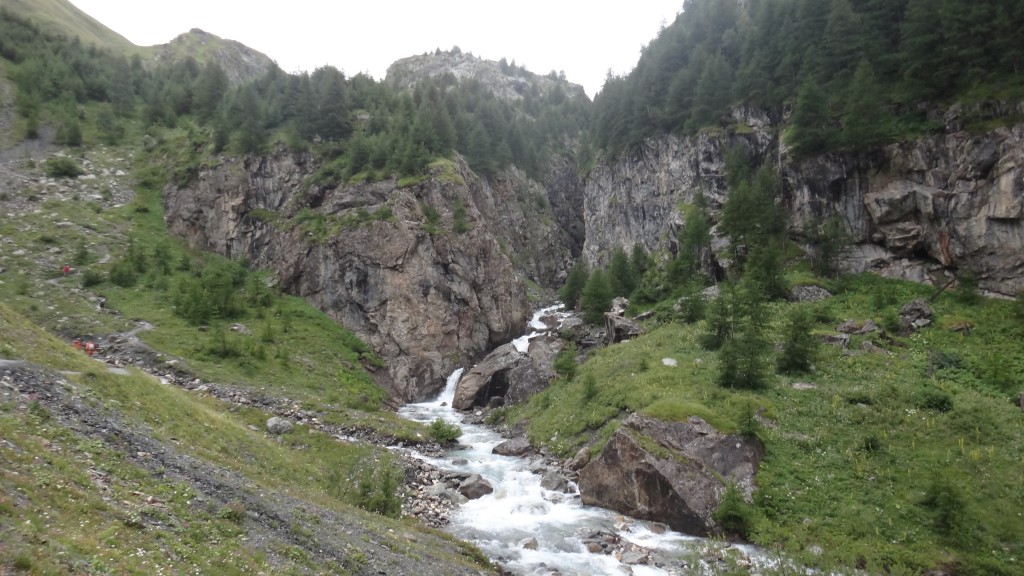
The course got progressively more scenic. The number of streams and waterfalls we passed made me sad it wasn't hot.
2. Vallouise to la Chappele (km 133)
We left Vallouise at 3am with dawn to come around 5:30am and started our ascent to the highest pass in the race (about 9000 feet high) – Col de L’Aup Martin. The 5400 foot climb started out pretty gradual, following a river into a long valley, where we were greeted with an incredible alpine sunrise. It was amazing to start seeing the majestic mountains all around us, emerging from the darkness in a much more remote and wild area. The trail started to become a bit more exposed and technical in sections, crossing some boulder fields. Finally we saw the pass, and arrived at the first shale fields, which were described as the major technicalities – on account of being steep and potentially slippery – of these sections. Although the morning was clear and beautiful, everything was still fairly wet, but to my surprise the shale paths proved to have good traction. The first field gave me some chills, despite it being only moderately steep and just a few hundred feet high. Still, I remember from my childhood where my father would warn me about seemingly easy terrain, where people often overestimate one’s ability to self-arrest. While the footing made slippage unlikely even in some sketchy passages in the trail, I did not agree with Chris that a tumble would be harmless. Usually the shale fields also end either in rocky scree or a cliff, neither of which providing a soft landing. In this part of the alps, the fields often do not taper off, but instead become steeper and sheer towards the bottom, making them much more intimidating than for example Hardrock’s Grant Swamp Pass (also the fields have off-trail not much traction as opposed to Grant Swamp). Another thing about being in any technical terrain is that one has to learn exactly what the conditions will be – what is slippery, loose, how much traction each kind of rock has in dry or wet conditions. While the crumbled shale paths, for example, provide excellent traction, the occasional shale plate proved to have quite the opposite – ice-like slipperiness.
Granite is usually good, though we encountered patches of mud of various consistency – from sticky clay to slippery. All in all, if you are in such terrain for the first time, you have to be very careful. People do die in the Alps every year from simple stumbles on exposed trails. Of course a lot of my fellow runners saw this as a very easy trail as they grew up hiking and climbing in the Alps … adding more insult to my own discomfort. I tried to not be bothered by the increasing exposure as we entered the steeper and steeper shale field towards the top of the pass, and jammed my poles firmly into the trail. Occasionally we would pass over rock cliffs, not my favourite since poles are of much less use on rock – in reality I would say they can be outright dangerous, since they can slip quite easily, letting you lose balance. As opposed to most races in the US that have occasional exposure, here the trail stayed exposed for basically the whole ascent, with many sketchy passages where the trail had eroded. All of the sudden it dawned on me that indeed the race had just started … I was glad to finally reach the pass, though apprehensive of the descent. The initial downhill was an increasingly steep cone of shale which we traversed on a consistently very steep downhill. After the shale we entered rock fields and various terrain, mostly with enough exposure to keep me well frightened. The one upside to all of this was that I focused so exclusively on the trail that I totally forgot about my foot – and it had stopped hurting! This was pretty much what I joked about before the race … quite amazing to see that it works. The clear lesson here is that if you are injured, you should seek the most frightening and demanding race you can find to take your mind off it! Another deep insight by Beat, counter-intuitive but so true! After about 3500 ft of steep descent I did feel my foot again, but it was not as bad as I feared – leading to increasing optimism for my foot, along with growing worry about not having written a will before coming here.
After some refreshments, we made our way back to the remaining three passes in this section. They proved to be just as unnerving with lots of traverses on narrow trails, extremely steep shale fields and a final monstrous 5200 foot descent above cliffs and other scary stuff. Many times it was unclear to me just how exactly we would get down some of the crazy mountain sides, and the path would traverse very exposed rock faces. Again – this went on almost without relief …During this downhill Chris got me especially paranoid since he reminded me that the next section would be the technical crux of the race, a traverse along a mountainside where we would have to cross some slippery rivers with very high exposure. I was getting extremely tense, as already this secion was outside my comfort zone – and unless we would sleep for 8 hours in La Chapelle, we would have to do the next section at night – though at least it might mean the exposure would look less frightening (note: that’s bullshit).
3. La Chapelle to Valsenestre
We agreed to sleep 2-3 hours in La Chapelle to be more fresh for the next section. While I did not feel I had to sleep, I found it prudent to be somewhat better rested. After all, the lack of sleep and exhaustion does significantly diminish ones mental capacity, and this was highly non-trivial terrain – a simple mistake could be very disastrous. I woke up early freezing cold in the tent, and refueled while Chris slept a bit longer. Finally, just before midnight we left the checkpoint. The next section to the refuge Souffle started with a very easy 5 k that was gradual downhill on a dirt road, after which we climbed steeply 3400 feet in about 3 miles. The trail soon crossed streams, with increasing exposure over cliffs and steep grassy drop-offs, though it was still fairly wide. We reached Ref. Souffle in good time, but I was freezing cold. It didn’t rain, but there was extremely thick wet fog all around us, and the ascent had left me drenched in sweat. Everyone slept at the refuge, so we just got some water and reluctantly got ready to do the dreaded traverse. I decided to chicken out and let Chris lead the way (after all it was his fault!), though in the end there wasn’t really anything we could do for each other except for some mental support.
The trail started out easy enough but soon looked more exposed as our headlamps shone into nothingness off the trail. A few slanted rocky sections over little streams were uncomfortable, but I anticipated that was not what they were talking about. Every moderately easy step I could take I was thankful for … still I was extremely focused to not stumble. It is interesting how much more effective adrenalin is than caffeine at keeping you awake …
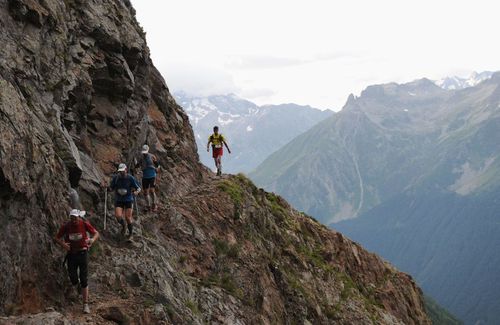
The easier of the two sections ... scary as hell in the night when wet (photo from a different year).

Same section in the direction of travel. The trail has a fault, and crossing the stream requires jumping or climbing across.
Finally we heard rushing, and the first of two main obstacles came into sight. The trail started to become a ledge in a rock face that became progressively narrower and less well built, with unsure footing and no safe purchase for the poles. After a short section we could see the narrow ravine the stream had carved into the rock. Before that the trail was rather faulty, causing some very slow crossing, my heart beating rapidly. The drop from the stream crossing itself would only have been a dozen yards as there was another rock ledge just below (however it did not extend far either), though it would have been a hard fall. To cross the stream we would have to jump over it since there was no solid footing in the stream bed or climb up a few yards and scramble down the rock side on the other side. I decided that was the better approach since there seemed to be some handholds, and due to the fog and stream the rock was wet – while it seemed to have reasonable traction, I just didn’t want to take a jump onto a narrow landing spot with unsure footing. I was able to do the little maneuver without too much difficulty as the handholds were solid, and Chris followed. I was now in the lead and despire being terrified of what might come, I felt I just wanted to get this over with quickly. Some other runners overtook us – the local europeans were much more used to this sort of stuff. I could not believe some even did this with Hokas, which have atrocious traction in some conditions …
After another tense kilometer or so we came to another rock face. This time the face seemed to be mostly vertical with the trail becoming even narrower. I moved forward being extremely tense since the drop next to the wet trail led into nothingness (and the RD had warned us that a fall here could be fatal) until I came to the key section of the whole race – the trail basically disappeared with just a narrow step that one had to step forward and stand on, with the rock face overhaging a bit without any good handholds (at least not that I felt I could trust my body weight on), making the passage extremely perilous looking. It was short and most definitely not climbing, but a simple slip would be enough to drop hundreds of feet down. When I saw it, I briefly considered turning back and thoughts of “no f*ing way! this is just not worth it” crossed my mind. The poles helped nothing with this, as a slipping pole could easily send you to your death. Somehow I made the decision – presumably thinking that I wouldn’t have to work on my project any longer – to take the step and place my foot on the small foothold, heart pounding. Anyways, everything went ok and I was able to find better handholds on the other side … after another section of narrow trail along the rock face and a somewhat easier stream crossing I finally found more comfortable ground again. My knees were shaking considerably, and I was panting hard. Chris took even longer to clear the section. Some runners behind us didn’t seem to have much problems, but others we talked with later also felt extremely unnerved. To be honest, fresh and in daylight this might not have been so bad – I presume it would have been much easier to find some good grips, make the right decision to properly put the poles away (I sort of laid them in front of me) and move slowly but securely across the section … though this was the second night, fog, rain, fatigue … and reduced mental capacity did not make this easy. I consulted my GPS and figured this was close to the end of the traverse and rejoiced. Still, the climb up to Col de Vaurze was again very steep with exposed sections near sheer cliffs with mostly better trails, though we had to still cross some muddy washed out trail sections above sheer drop-offs. Fortunately the mud was sticky …The whole time I thought this was not really worth it, too much risk, and considered going back on my promising Daniel Bennahou to do PTL with him … I just didn’t feel like a proper alpine hiker. While the most technical section was behind us, there was still the Col de la Muzelle, which used to be the crux, but had recently been equipped with a new trail … still promising to be difficult and exposed. I guess at this point my mental capacity for exposure and fear started to be at its limit, and I became more apprehensive of the terrain.
The descent from the col was incredibly steep and long – 4000 feet in 3 miles, down an impossible looking mountain side through still many exposed cliffs, shale fields and so on. After some refreshments we had another – easier – 3000 foot climb and descent.
The climb to Col Cote de Belle was one of the steepest sustained climbs I have done … but I liked it and set a nice even pace up the pass. Initially a few runners overtook us, though later on we caught them again and ended up ahead. The uphill was easy but muddy – the downhill more exposed than I thought, with some muddy sections above some steep cliffs. We later entered a section with thick lush vegetation that surprisinlgy looked like HURT – especially in thick fog – and saw some people had wiped out into the plants. That was rather bold given thevegetation can be too thin to hold you and can simply obscure the view of a cliff … The downhill seemed to go on forever, and although there were runnable sections I refrained from running as to not aggravate my foot.
Exhausted we reached the last big checkpoint, having been even a bit faster than we initially thought. My foot had been holding up well – while the toe joint was tender, it did still feel possible to walk and even run, and the arch of my foot seemed also properly under control – even though I had tightened my shoes for the technical sections. I had from the beginning added a neoprene insert above my arch for extra padding, which had worked quite well.
4. Valsenestre to Finish
Our main goal was to reach Les Deux Alpes before or shortly after darkness at this point, and to survive the Col de la Muzelle.The climb to the col was another 4400 foot of increasingly steep terrain. Mercifully it was not exposed and rather good trails at least to the shale cone. The cone did not look quite as steep as it did from afar, but it still rose over one thousand feet above us. We were moving very well, again putting down a steady pace where most runners started out fast and slowed down. Once we got to the cone, we briefly stopped to ingest some food, and we went up the cone. As it turns out they really put a highway into the field – the path was steep and a little slick, but very wide – Chris mentioned you could ride a bike on it! The cone had much more slippery and chaotic shale than the other fields we encountered and I could envision how difficult and unnerving this ascent in its original form would have been. Still I was not too sad to avoid this, even though the finish was anticlimactic in a sense. Even so though the cone would have been less frightening than the section during the night, though would have been slower going. The original chimney climb was also gone, and I was on top of the col before I knew it. We climbed 4400 feet in about 2.5 hours, not bad after 100 miles …

The col from below. If it wasn't for the new trail, his would have indeed been a formidable challenge.
We were left with a descent of 5700 feet and another 2100 feet of climbing. The initial descent was steep but very doable and had even some fun glissading on a snowfield to reach the Refuge de Muzelle. After getting some sodas we took the steep but very well maintained path down to Venosc. Though still exposed, the path was of unusually high quality due to some significant traffic to the refuge. We descended again a long canyon with a raging stream and countless waterfalls, though my feet started to burn enough I could barely enjoy it. The descent finished on a punishing boulder road which was not only brutally steep but also unusually slippery and painful to our feet … as usual, when you get close to the bottom, it gets worse here rather than easier …
After Venosc we climbed 2100 feet in about 1.5 miles to reach Les Deux Alpes. Finally my finishing fire kicked in and I overtook numerous runners on the very steep but easy ascent along a hiking trail beneath some skilifts which were heavily used by downhill mountainbikers, seemlingly the summer activity to do here. While I briefly cursed skiers (and bikers), the knowledge I would finish gave me intense energy, and the climb felt in a way effortless. At the top I waited briefly for Chris, then we made the final 1.5 miles to the finish through town and ended in a sprint (partially to avoid being overtaken by some runners close behind). We had done it, in 59:00:01 – though I swear it was under 59 hours according to my watch 🙂
The race itself had an astonishing finisher rate of 70% – incredible given the difficulty of this terrain and the bad conditions. Though the time limit was generous, it still amazes me how tough all the european runners are that I encountered both in TDG and here.
During the race, I was seriously down on the prospect of future exposed hiking and racing. It seemed just not enough fun – though in hindsight I think I had mostly a bad attitude. I do think that it is very important to keep a cool head in the alps – the terrain is just much more dangerous than even Hardrock, and you really have to keep making good decisions and pay attention – the margin for error is much smaller than in most other races I’ve been in. That said, I think I can do better with a lot of the exposure, especially since I feel quite sure-footed and rarely ever fall – and I already know how I would behave when encountering another bottleneck – take my time, investigate a good route, use the proper technique.
And now, even despite the difficulties, the pain, the exhaustion, the fear – I am really looking forward to TDG again (until about 10 miles in at least) and I am very excited at the prospect of PTL. As hard as it is to race in the alps … it’s more than worth it. To me, it’s one of the best ways to be alive.
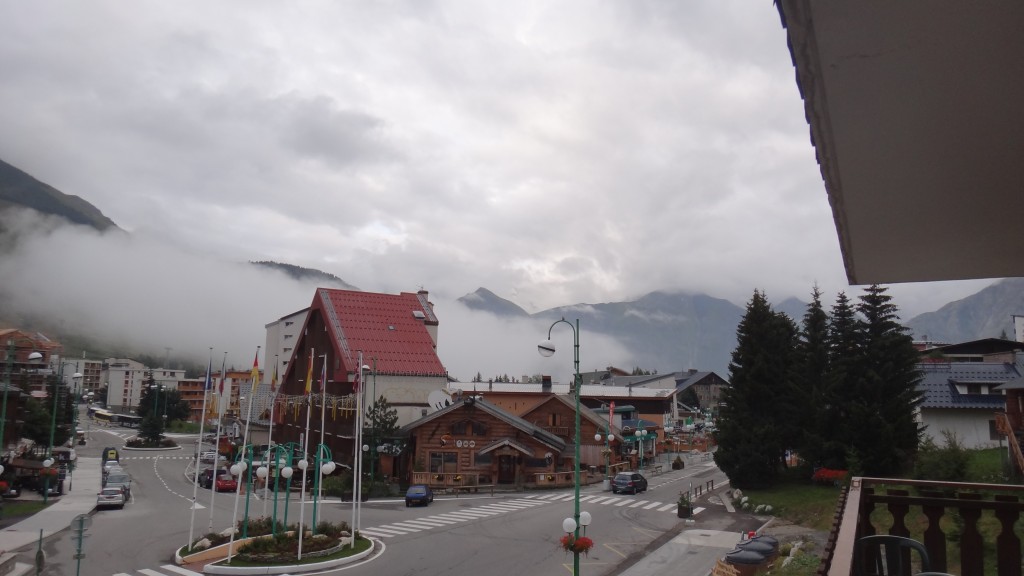

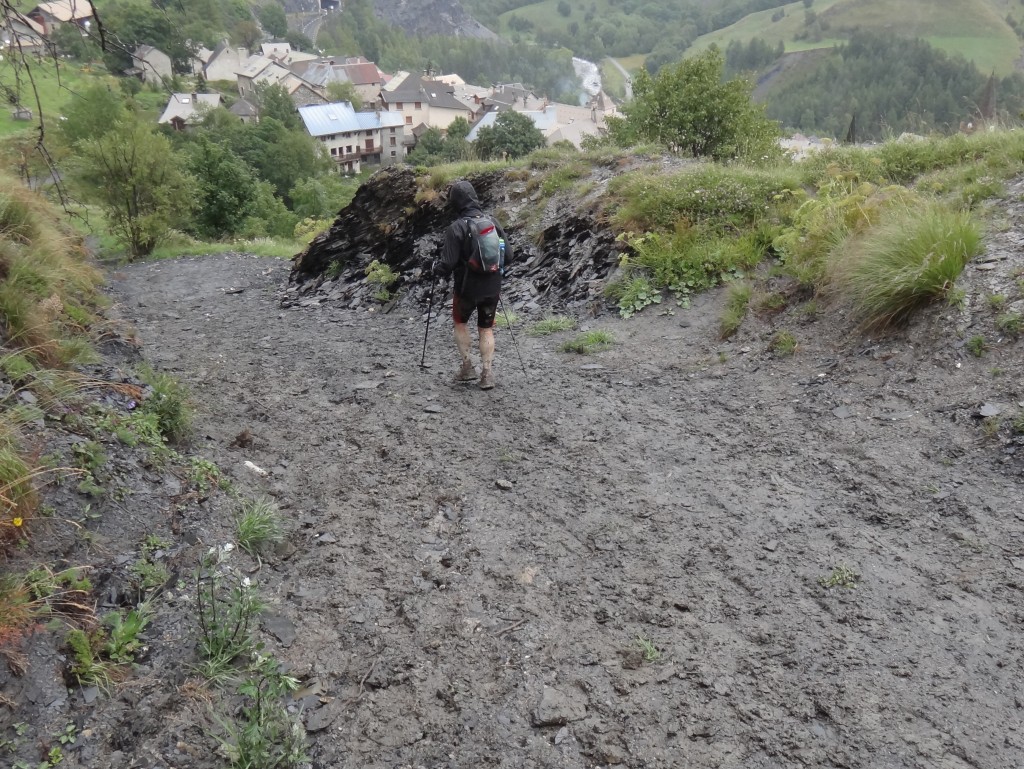
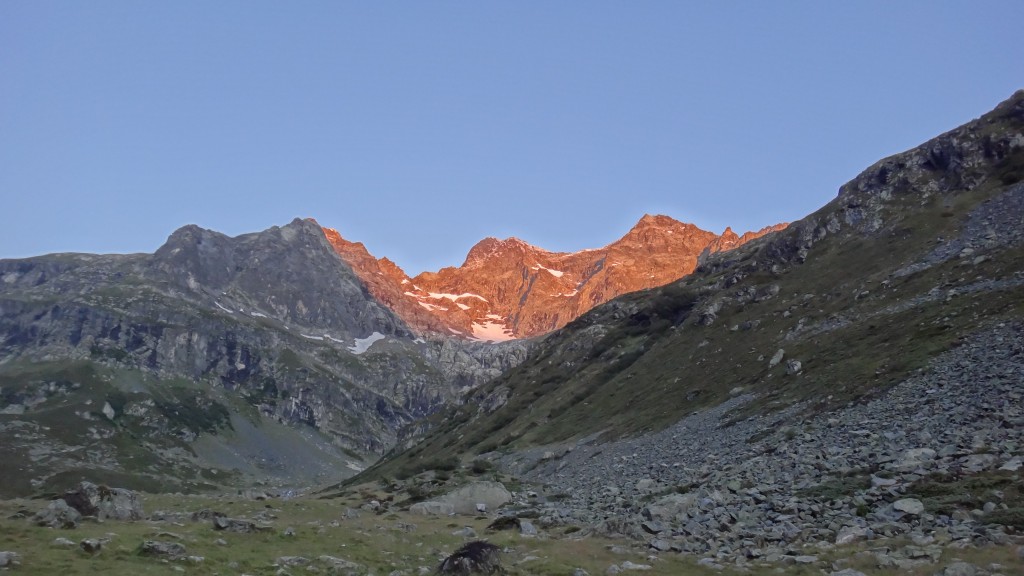
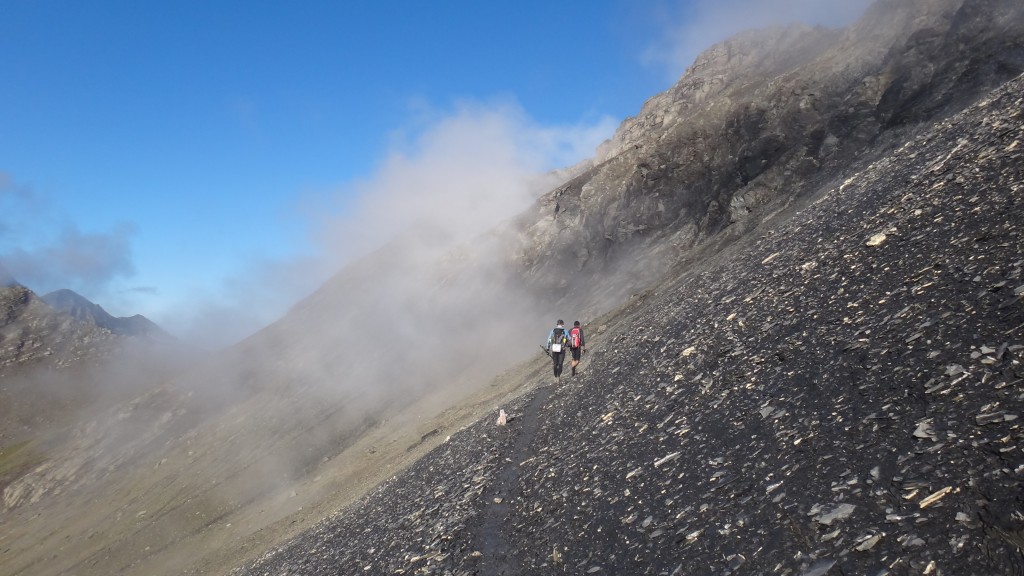
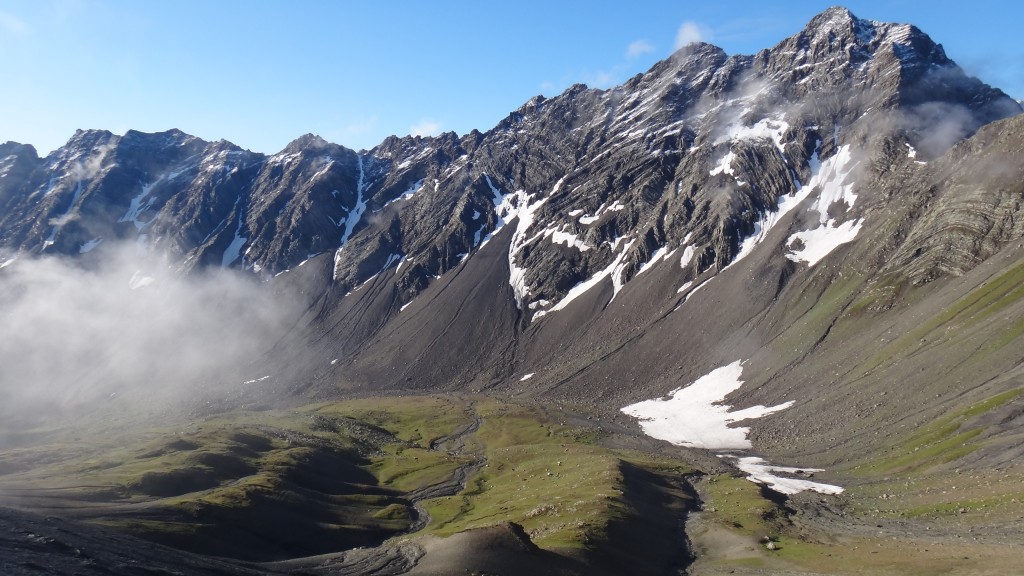
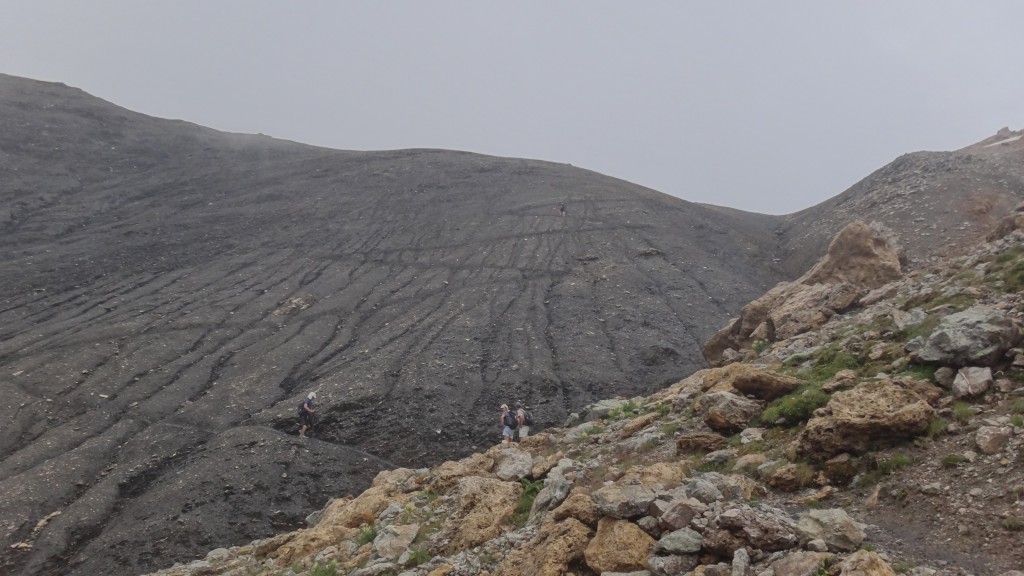
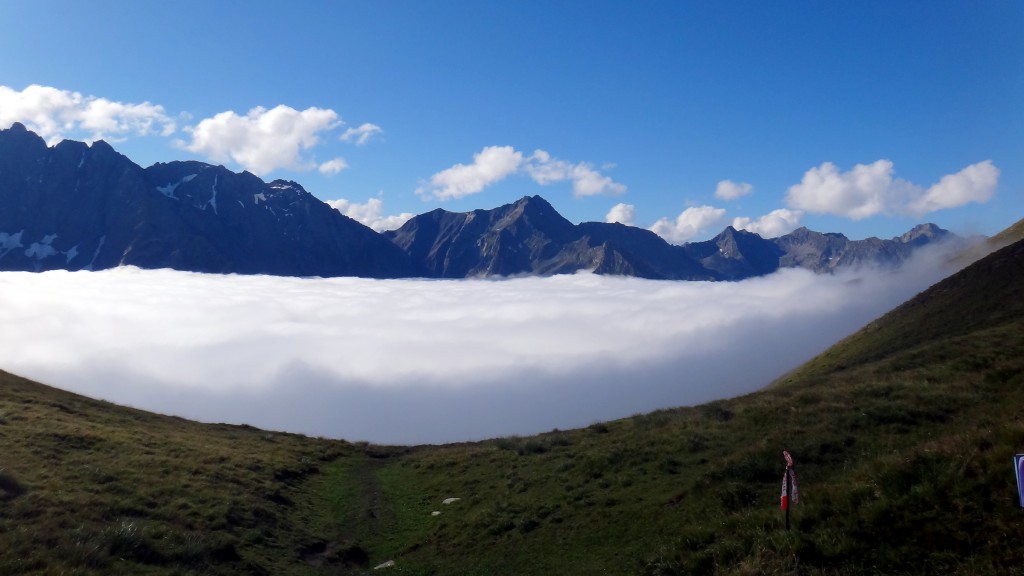
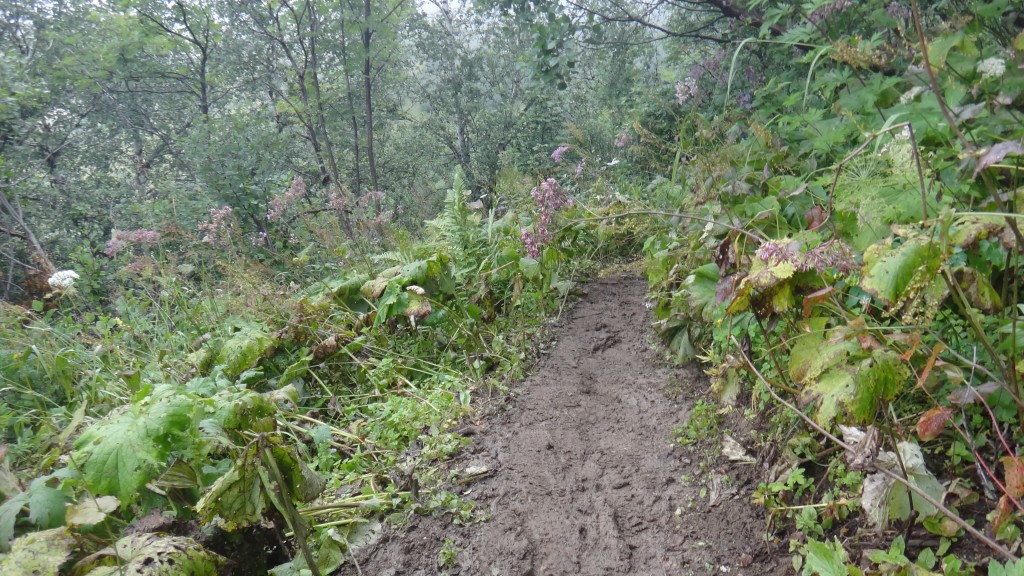
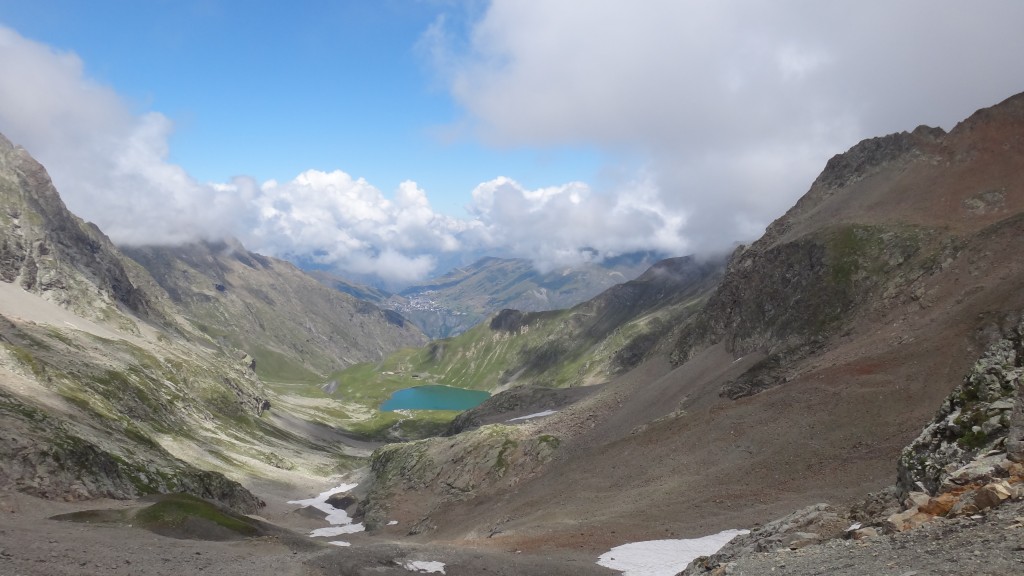
I WANT TO GO TO TEDDY BEER!!!!!!! Hopefully they serve more than (terrible) French beer. Sounds like a scary race. If you want to practice with exposure there are some good hikes here in the Park for you (to do with Brad, who is encouraging me to branch out into goat trails, but I am skeptical). Check out this picture. Would you hike that?
http://www.summitpost.org/images/original/179867.jpg
Ptarrmigan Goat trail .. that one looks like a butt-clencher, nay soiler! Very good exposure training indeed. I’d love to go there. No actually I would be scared to death, but hey … Seems like an advanced adventure. Nothing quite as crazy in this race, of course. I think I would don some real hiking boots for that one.
Definitely not something I would try without someone who really knows what they’re doing. And I think a bit more training is in order before I would consider that one. Yikes!
Now doing this at mile 100 at night … mmm. Nah!